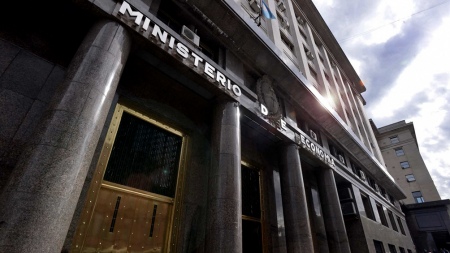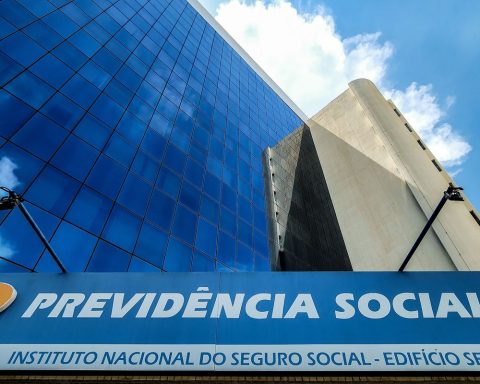The fiscal dynamics had a change in trend from July, with primary spending that for the first time in the year had a reduction in real terms in the year-on-year comparison, to the point that for the first time in the course of 2022 a drop was registered in the accumulated, according to different estimates.
Monitoring of the monthly reports of the Congressional Budget Office (OPC) shows that between January and June there were always year-on-year increases in primary spending greater than inflation, a situation that was completely reversed from the second semester, with decreases compared to the same period in 2021.
In the same sense, the consulting firm Analytica highlighted that the real reduction in spending in the August-October quarter exceeded one trillion pesos (exactly one trillion and 43 billion), in a shift that “began with (the former Minister of Economy, Silvina Batakis) and deepened with (the current, Sergio) Massa,” the entity’s president, Ricardo Delgado, told Télam.
“It is a process of fiscal consolidation, with greater monetary ordering, rate hikes and greater control over issuance, which has to do with compliance with the agreement with the International Monetary Fundwhich was the first thing Massa raised,” he added.
In this sense, Delgado recalled that “The first thing Massa said was that the goal of 2.5% primary deficit was going to be met and that is the path.”
The reasons for the phenomenon are diverse and, in this sense, the vice president of the Argentine Association of Budget and Public Financial Administration (ASAP), Guido Rangugni, stressed that there is “a will to contain spending” and that “in fact there are explicit statements of the minister in this sense, with a performance that is in line with what is stated, as a policy objective that is to contain spending”.
The appreciations of Delgado and Rangugni coincide with those expressed in a timely manner by the Secretary of the Treasury, Raúl Rigo, who stressed that “When the current minister Massa took office, he gave a series of guidelines that would characterize it and one of them was the fiscal order”to complete by noting that “when one makes fiscal orders, he has to do things that can be read as an adjustment, but we do not believe that they are.”
The amounts and percentages that show the trend change in the fiscal situation
The primary deficit in the ten months elapsed in 2022 amounted to one trillion 225.174 million pesos in the “Cash Base” measurement of the Ministry of Finance, and to one trillion 733.787 million pesos in the accrual reported by the Congressional Budget Office ( OPC).
Beyond the methodological differences in the measurements, an analysis of the evolution of spending allows us to conclude that if the fiscal order had not mediated as from the second semester and continued with the expansive dynamics of the first half of the year, the accumulated imbalance to October It would have been more than two trillion pesos.
Ricardo Delgado, president of the consulting firm Analytica, warned of the change in trend and since Sergio Massa took office as Economy Minister he began to carry out a weekly survey of the fiscal situation, verifying that in the July-October four-month period the fall in primary spending in real terms (that is, deducting inflation) was one trillion 239,000 million pesos.
MONTH TO MONTH PROGRESSION
The month-on-month progression, both in percentage for the OPC and in absolute values for Analytica, clearly reflects the two scenarios.
January had a real increase in the primary deficit of 9,000 million, which only escalated in the following five months, until reaching 1,122,000 million at the end of the first semester.
Starting in July, the real evolution of primary spending was inverse, in such a way that in ten months, for the first time in the year, the year-on-year comparison showed a drop of 6,000 million.
The monthly comparison made by the OPC reflected a real increase of 19% in January, 12.8% in February, 16.8% in March, 9.8% in April, 8.8% in May and 8.7% in June.
Those six consecutive months of increases in real terms contrast with the four consecutive relegations that followed them: -11.5% in July, -20.4% in August, -15.9% in September and -16.7% in October, with which the accumulated figure in ten months closed with a drop of 1 .6%
The quarter August-Octoberunderstood by the management of Massa, showed a real retraction of spending of one trillion 43,000 million pesos, of which 31.5% (9,000 million) corresponded to economic subsidies.
The acceleration of inflation “is not that significant, but it contributes”
Rangugni pointed out in statements to Télam that the acceleration of inflation “is not so significant, but it contributes” to the improvement of the fiscal front through what economists call “liquefaction” of nominal spending by growing less than prices, but put the accent on issues of a budgetary administration nature, which come from the end of last year.
“As there was no Budget approved by law but rather an extension of that of 2021, that amount allowed it to be handled more freely in the first half of the year, but later the resources became scarce and although there was an extension (through DNU 331 of 16 June), it did not occur in all the games with the same ease”, clarified
He also indicated that “There were drops in real terms in some social spending and there was a slowdown on the side of energy subsidies”one of the issues that the economist Nicolás Pertierra, from the Scalabrini Ortiz Center for Economic and Social Studies (CESO), also highlighted to Télam, who highlighted the drop in transfers to Cammesa (Administrator Company of the Wholesale Electricity Market) .
“There are some unknowns about whether this can be sustained – Pertierra stated -, because in July, August, September, months in which transfers to Cammesa were sharply reduced, tariff subsidies had not yet been cut”, from what It follows that the improvement could be due to a payment schedule issue.
Something similar was evaluated by Delgado in his weekly analysis of November, in which in the first week the expenses in economic subsidies had a real year-on-year rise of 55.8%, but because “in November 2021 the bulk of the payments were made in the fourth week of the month.
In this sense, Rangugni asked to pay attention to the evolution of spending in what remains to end the yearin view of what usually occurs in the distribution of the budgetary quotas that the Ministry of Finance assigns to each of the jurisdictions: “due to the execution and authorization procedure, each ministry is assigned quarterly quotas that generally They are smaller in the first three and looser in the last one, in which they are released a little more,” he said.

Although not all expenses have the same flexibility and among the most rigid are the remuneration of personnel and retirement and pensions, contrary to what happens with Goods and Services, with a drop of around 20% in real terms, as well such as capital spending, which with a nominal increase of 47.1% was 10.6% below inflation in the first nine months of the year.
Pertierra warned that “the basis of comparison for 2021 is high spending”as usually happens in odd years, in which Argentina holds its general elections, and pointed out in this regard that “from July-August 2021 until the middle of this year, spending had been growing very strongly.”
After this evolution, “there was less fiscal space and less possibilities to finance the deficit. Obviously, the real reduction in spending also responds to that,” he estimated.


















